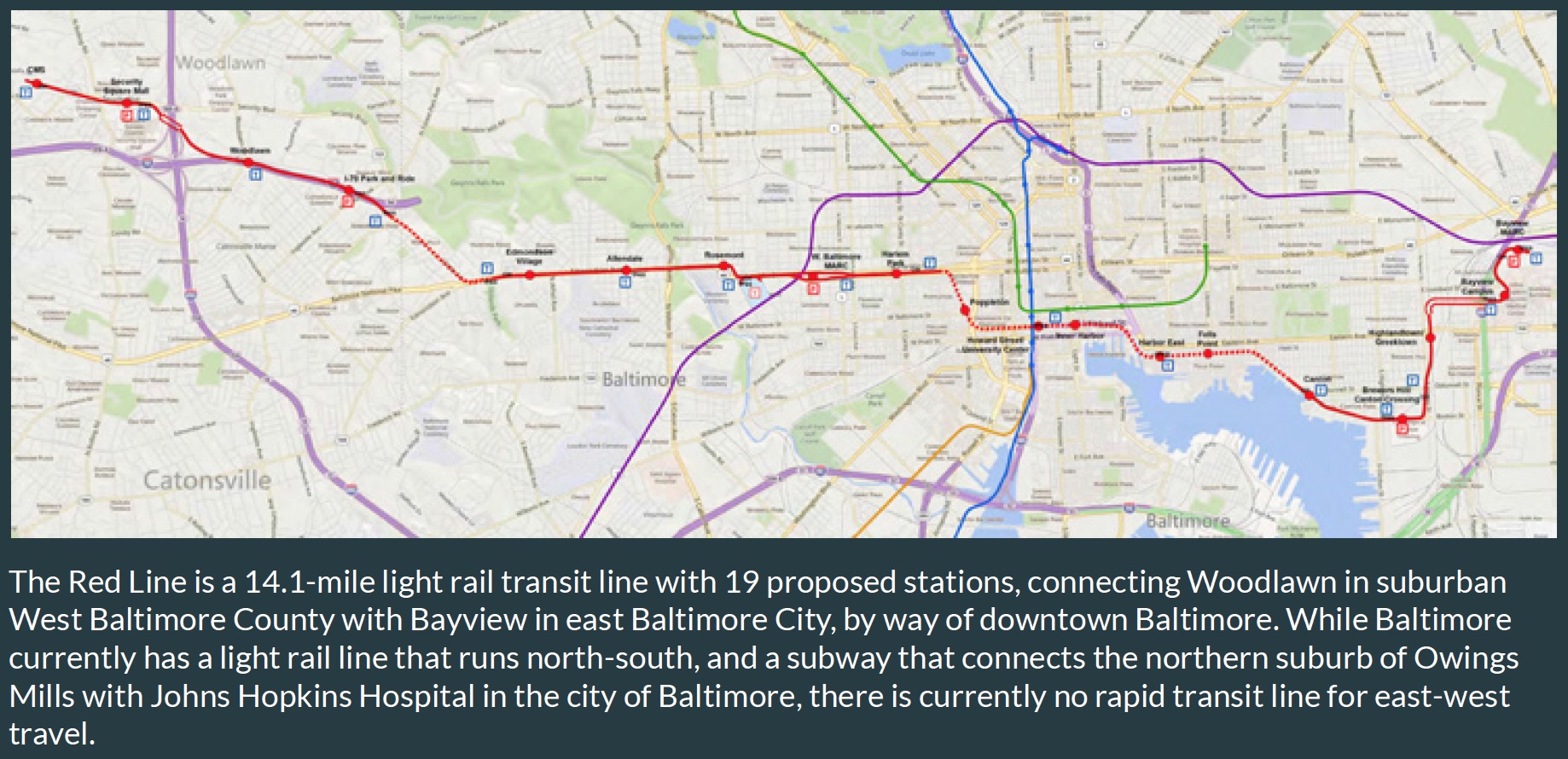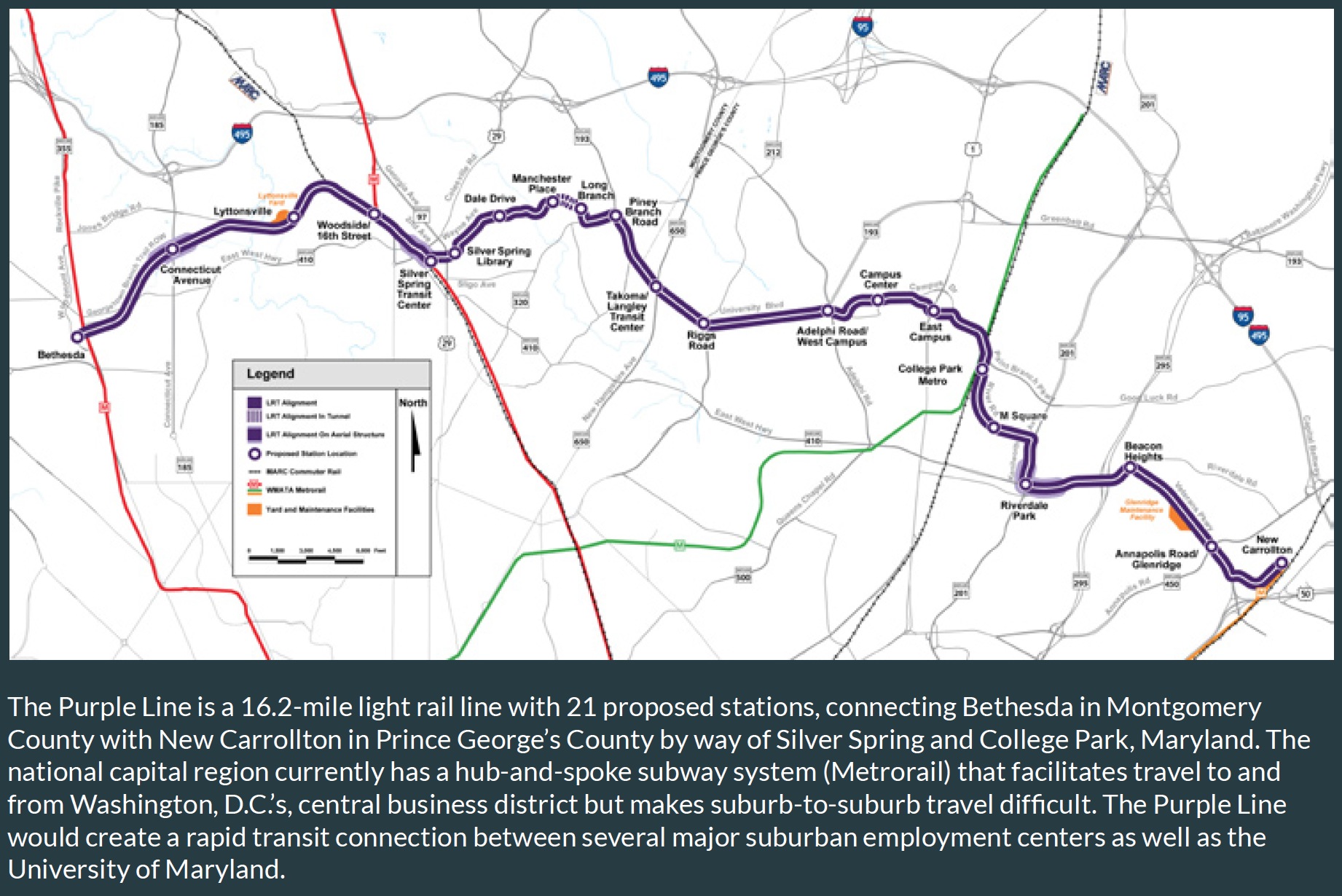TRANSPORTATION FOR AMERICA
Executive summary
The two major rail transit lines planned for Maryland represent a significant investment in the state’s future and economy. Drawing from experience across the nation, this report attempts to assess the full range of potential economic benefits from construction of the Purple Line, connecting Maryland’s Washington, D.C. suburbs, and the Red Line, providing east-west connections between Baltimore and its suburbs. Given the number of regions across the country contemplating similar investments, we offer this report as something of a template for how to make a comprehensive assessment of economic impacts.
The bottom line: These two lines would position Maryland for economic success in ways that few other investments are likely to do. They not only address existing mobility issues, but also lay the groundwork for billions of dollars worth of economic development. This comes at a time when competitor regions are moving forward with their own ambitious transit plans, as companies and workers alike are being drawn in increasing numbers to walkable locations with high-quality transit.
Among the highlights:
During construction, the Red Line alone would generate nearly 10,000 jobs, increasing household earnings by nearly $540 million. Construction activity and related earnings would in turn induce another 5,200 jobs. The Purple Line would create an estimated 20,240 direct and indirect jobs.
The spin-off effects from construction would lead to a total economic impact of more than $9 billion between the two lines.
Several hundred ongoing jobs to operate and maintain the lines would be generated, with 425 on the Purple Line alone, increasing household earnings by $9 million.
With careful execution, the construction project itself could help to address longstanding challenges beyond transportation. A modest investment in training local workers, as has been done in Missouri, Los Angeles and elsewhere, could make a significant dent in unemployment and leave thousands of workers trained for subsequent work, with their earnings providing lasting benefit to the economy.
After construction, more than 83,000 additional residents in the Baltimore region will have access to frequent, high-quality transit, a 62 percent increase over today. The Purple Line will mean 91,000 people in Montgomery and Prince George’s Counties will have new access to transit.
A dramatically expanded labor pool and customer base for Maryland businesses would result. Nearly 250,000 jobs will be accessible via rail transit in the Baltimore region, and 290,000 in the D.C. suburbs.
Productivity increases from more reliable commutes and better access would raise the income of those living near the lines by $2.2 billion per year and allow businesses to create 27,183 new jobs.
An expanded tax base can be expected from the real estate development potential unleashed from roughly 2,000 acres in proximity to stations on the Red Line. Meanwhile, the Purple Line alone is expected to lead to $12.8 billion in additional property values, dramatically expanding the tax base and lessening the burden for local homeowners and renters.
Families can save more than $900 a month if they can get by with one fewer car thanks to high-quality transit service. If just one quarter of those with new service did so, they would save nearly $133 million a year — money that can be spent on other Maryland goods and services.
Time is money: The Purple Line would cut travel times from Bethesda to New Carrollton from a projected 108 minutes in 2040 to just 63. The Red Line will reduce travel times for riders along the Woodlawn–Bayview corridor from 79 minutes in 2035 to 45 minutes.
Opportunity costs: The above are some of the numbers resulting from a decision to go forward with the investment. More difficult to quantify are the effects of failing to make commutes predictable, or even possible; or of missing the chance to give employers locations where they can be sure to be able to recruit and retain workers. Nor does this assessment measure the talented workforce lost to more dynamic regions of the country that do supply needed transportation networks and development opportunities.
Download full version (PDF): Weighing Maryland’s Economic Future
About Transportation for America
www.transportationforamerica.com
Transportation for America is an alliance of elected, business and civic leaders from communities across the country, united to ensure that states and the federal government step up to invest in smart, homegrown, locally-driven transportation solutions. These are the investments that hold the key to our future economic prosperity.
Tags: Baltimore, Maryland, MD, Washington DC








 RSS Feed
RSS Feed